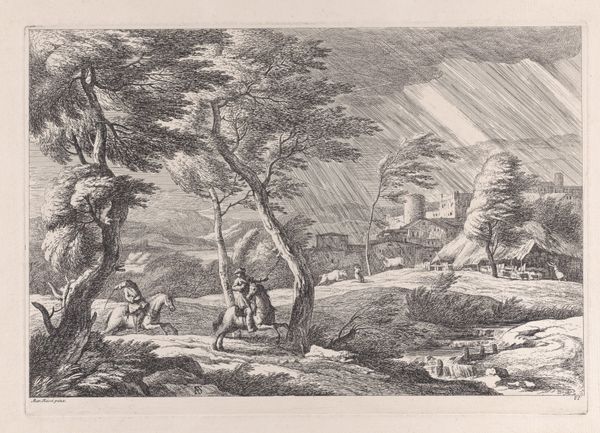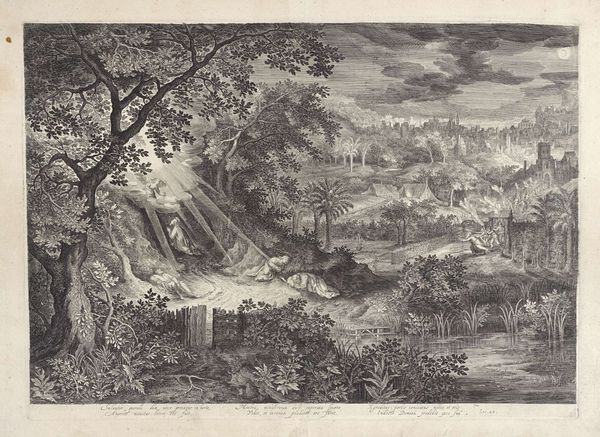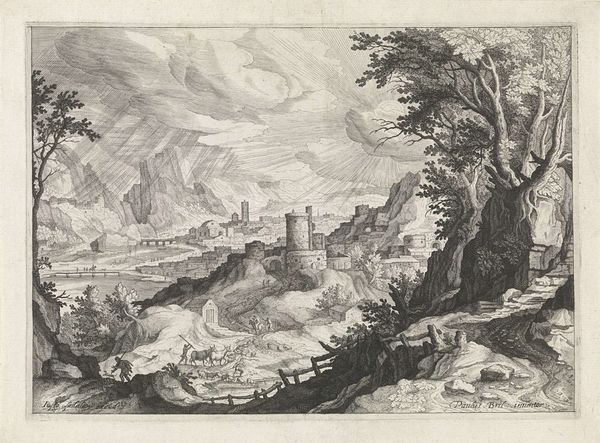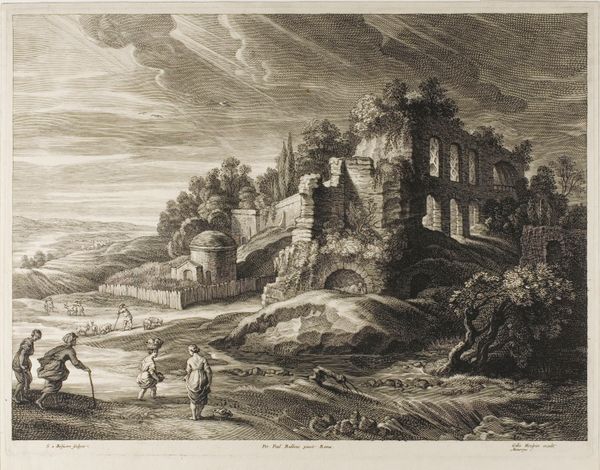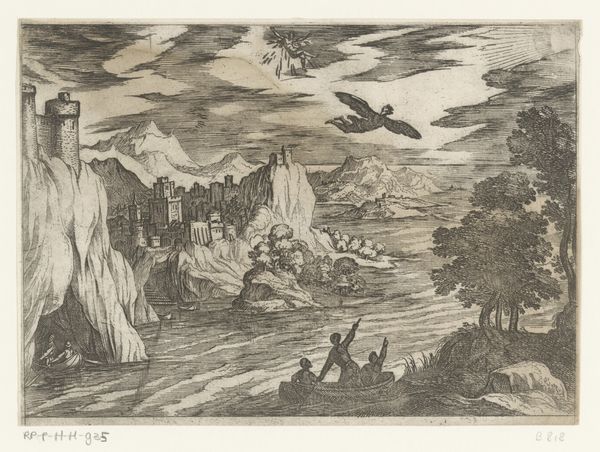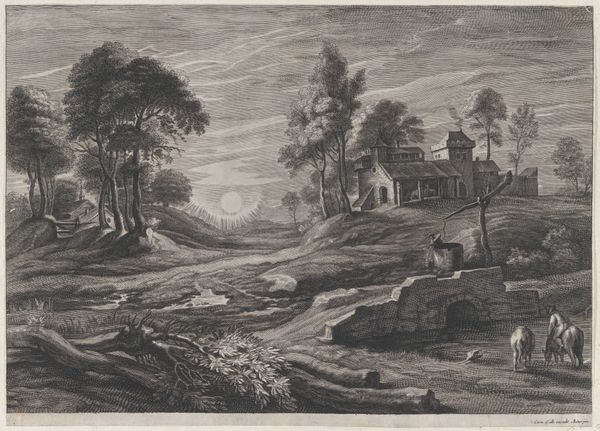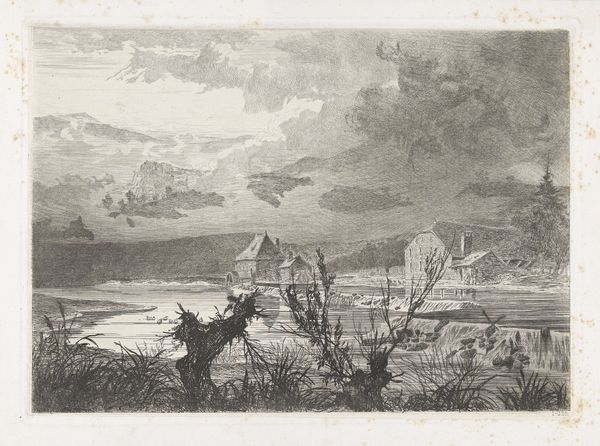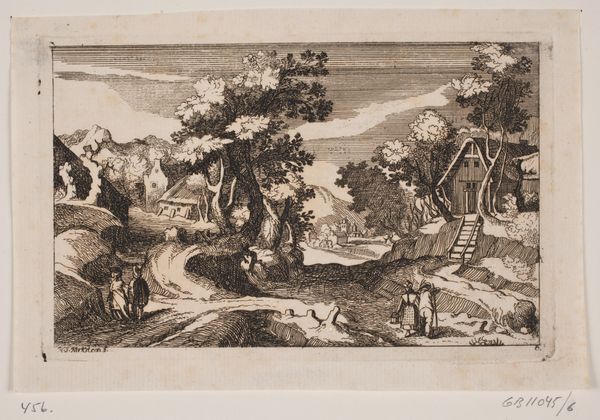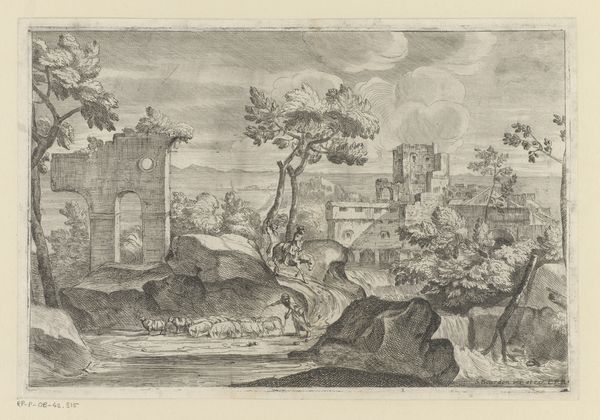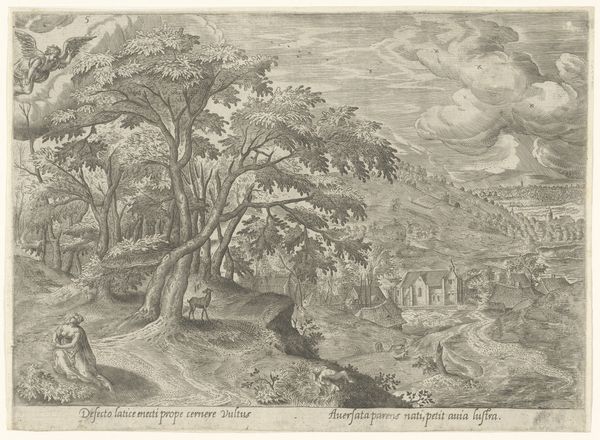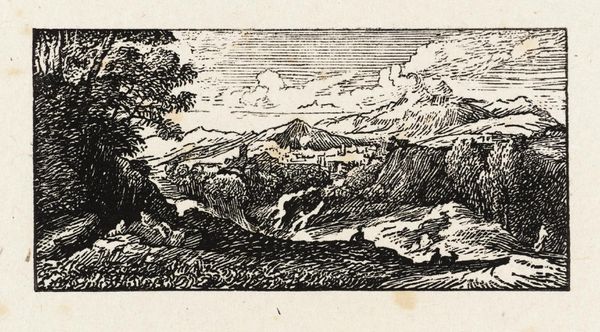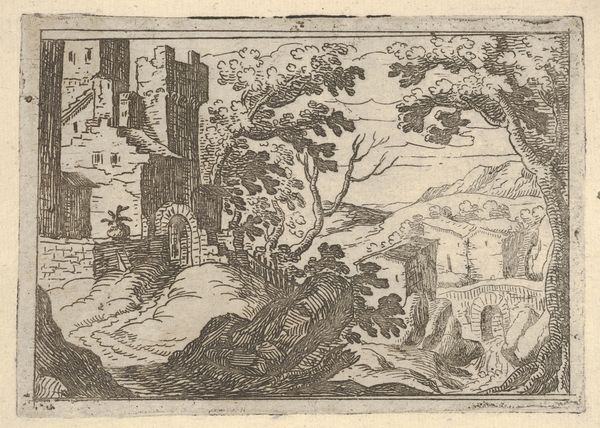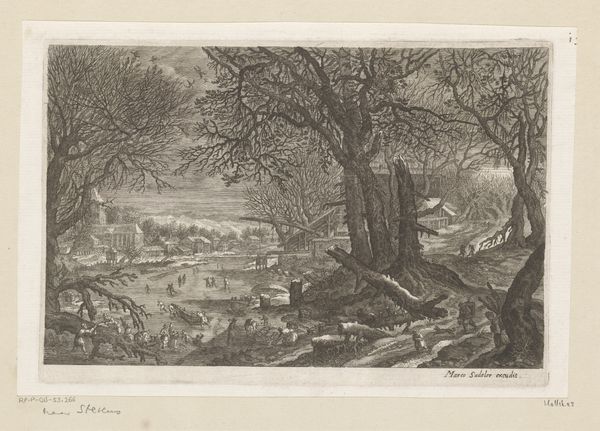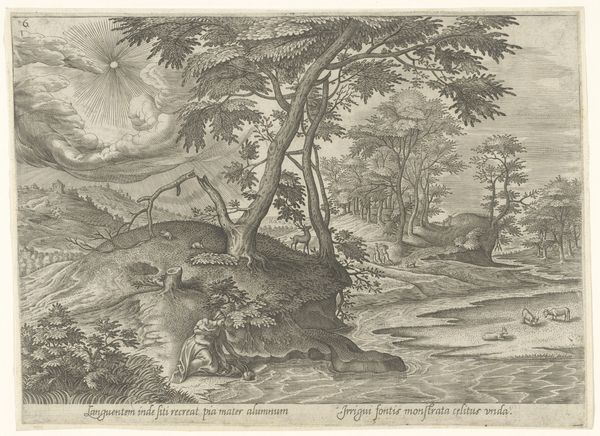
drawing, etching, ink
#
drawing
#
baroque
#
pen sketch
#
etching
#
pencil sketch
#
landscape
#
charcoal drawing
#
ink
Dimensions: height 283 mm, width 382 mm
Copyright: Rijks Museum: Open Domain
Willem van Lande made this etching of an Italian landscape in the storm sometime between 1610 and 1650. Etching is a printmaking technique that relies on acid to cut lines into a metal plate. The plate is first covered with a waxy, acid-resistant ground. Then, using a sharp needle, the artist scratches away the ground, exposing the metal. The plate is dipped in acid, which bites into the exposed lines. The longer it’s left, the deeper the lines. Ink is then applied to the plate, filling the etched lines, and the surface is wiped clean. Finally, paper is pressed against the plate, transferring the ink and creating the print. Look closely, and you can see how the etched lines define the forms, create texture, and capture the dramatic light. The process itself—the careful layering of lines, the controlled use of acid—mirrors the controlled chaos of the storm depicted. Understanding the craft of etching allows us to appreciate van Lande’s skill and the way his artistic choices are interwoven with the materiality of the printmaking process. It bridges the gap between fine art and craft, revealing the labor and skill involved in creating this evocative landscape.
Comments
No comments
Be the first to comment and join the conversation on the ultimate creative platform.
